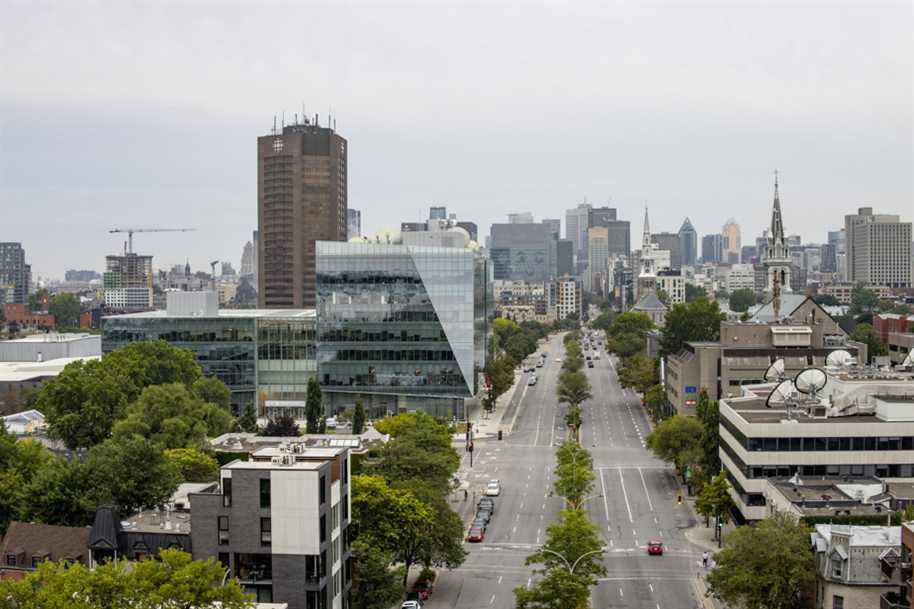The Regional Metropolitan Transport Authority (ARTM) will file a detailed opinion on the impacts of the Eastern REM in early 2022, more than a year after the project was announced by CDPQ Infra. The boss of the ARTM does not believe that this analysis will come too late and recalls that no service agreement has yet been signed with the promoter of the automated train.
“I guarantee you that we will retain the entire independence of the Authority with regard to service planning when issuing our opinion to the government,” said Benoît Gendron, Director General of the ARTM. We are not at all in collusion with the Caisse. We are going to be completely neutral and objective. ”
CDPQ Infra, a subsidiary of the Caisse de dépôt, has become a leading player in public transit in Montreal since the launch of the Réseau express métropolitain (REM) in 2016. The REM is a 67 km automated train system that will link the Rive-Sud, the airport and other downtown suburbs from 2022. It will be operated in the form of a “public-public partnership” by CDPQ Infra, which will own it and hope to derive returns from it. financial.
Quebec commissioned CDPQ Infra to study a series of extensions to the REM in 2019, based on various “structuring corridors” studied by the ARTM. This exercise gave rise to the announcement of the REM de l’Est in 2020, a 32 km network planned towards the eastern tip and the northeast of the island.
The project valued at $ 10 billion will be submitted to the Office of Public Hearings on the Environment (BAPE) at the beginning of 2022. It is within this framework that the ARTM – the body responsible for planning all transport collectives – submit an opinion to the government.
Not “too late”, says Gendron
The ARTM’s analysis will focus on three main areas, explains Benoît Gendron. “One, the integration of this network in relation to the existing public transport network, two, the impact on the financing of public transport, and three, on the new model of network organization. ”
Benoît Gendron does not think that this analysis will come “too late”, even if the Eastern REM project will have already gone through many stages, including the launch of a notice of interest to attract potential suppliers of the whole world.
It is only after the work of the BAPE that a service agreement could be concluded between the ARTM, the government and CDPQ Infra, says Benoît Gendron. A first agreement was ratified in 2018 to integrate the initial phase of the REM into the existing network and set the prices that will be paid to CDPQ Infra for each passenger. It is valid for 99 years and renewable for another 99 years.
“It can’t work”
Florence Junca-Adenot, associate professor in the department of urban studies at UQAM and former founding president of the Agence métropolitain de transports (AMT), believes that several crucial planning steps were skipped as part of this project. She wonders about the many powers given by Quebec to CDPQ Infra, which allow it to carry out its projects at an incredible speed.
You have in competition two decision centers planning heavy infrastructures, which is not done in any metropolis in the world. It can’t work.
Florence Junca-Adenot, professor and former founding president of AMT
Harout Chitilian, vice-president, corporate affairs, development and strategy, at CDPQ Infra, recalls that his group “acts on the basis of a mandate clearly defined by the government of Quebec”. The Caisse subsidiary studies the feasibility of the projects submitted to it, but does not, in short, propose them.
“We receive mandates from the government, within a framework which is pre-established, which have been the subject of analyzes and studies by the competent authorities,” specifies Mr. Chitilian. Then we analyze potential solutions, and we present those solutions to the public. ”
The vice-president of CDPQ Infra says that the ARTM has played an “essential” role in several respects since the announcement of the first phase of the REM. The two groups worked together in particular to organize the drawdown of bus lines to future REM stations, and to implement the “land capture” model which makes it possible to levy a tax on new constructions near stations.
Harout Chitilian does not consider it abnormal that the ARTM submits its opinion on the impacts of the Eastern REM more than a year after the announcement of the project. CDPQ Infra will publish its own studies for the BAPE, and citizens will also be able to submit their briefs, he underlines. “The project will continue to evolve for a minimum of 18 to 24 months. ”

